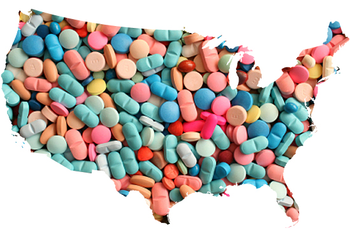By Kelly Patricia O’Meara
April 28, 2015
April is National Child Abuse Prevention Month so it seems appropriate to shed some light on what many believe to be the newest category of child abusers; psychiatrists subjecting foster care children to cocktails of dangerous psychiatric drugs which carry international drug regulatory agency warnings of serious and even life-threatening side effects.
Of the estimated 402,000 children in foster care in 2013, more than 157,000 (39%) of these are five years old or younger.
A recent yearlong investigative report from the San Jose Mercury News found more than twelve percent of California foster children who received a psychiatric drug in 2013 were prescribed two, three, four or more psychiatric drugs at a time—a more than ten percent increase from 2004. The investigation also uncovered the pharmaceutical payments driving the highest prescribers of drugs to foster youth; of those doctors with financial ties to pharmaceutical companies, the higher prescribers collected almost four times—or about $10,000 more—in pharmaceutical funding than the lower prescribers.
While there are a number of initiatives and “awareness” strategies to bring attention to the “importance of families and communities working together to prevent child abuse,” nowhere is there any mention of how best to protect children from the child abusers shielded under the guise of mental health.
In order to truly address all forms of “child abuse,” including excessive and inappropriate drugging, accurate information and thoughtful options must be made available to families and communities as part of these yearly informational campaigns.
It no longer is a secret that the psychiatric drugging of America’s children is at epidemic levels, and nowhere is this more evident than in the extraordinary drugging of children within the nation’s foster care system, where 13-52% of foster care children are being prescribed mind-altering psychiatric drugs.
According to a 2011 U.S. Government Accountability Office (GAO) report, five states were evaluated (Florida, Massachusetts, Michigan, Oregon, and Texas) and the data revealed that in 2008 foster children were prescribed psychotropic drugs at rates 2.7-4.5 times higher than were non-foster children in Medicaid.
Broken down by state, the GAO report showed the percentage of foster children aged 0-17 prescribed psychotropic medication(s) as follows: Florida 22%, Massachusetts 39.1%, Michigan 21%, Oregon 19.7% and Texas 32.2%. Along with these data, the GAO explained that, “no evidence supports the concomitant use of five or more psychotropic drugs in adults or children, yet hundreds of both foster and nonfoster children in the five states had such a drug regimen.”
In other words, according to GAO, children are being given five or more mind-altering drugs, of which there is no evidence that the cocktail of drugs is effective. But it becomes even more troublesome when one considers the explanation of psychiatric drug use in children provided by the National Institute of Mental Health (NIMH) which states, “Many psychotropic medications have not been studied in children, which means they have not been approved by the FDA for use in children…. In particular, the use of most psychotropic medications has not been adequately studied in preschoolers. More studies in children are needed before we can fully know the appropriate dosages, how a medication works in children, and what effects a medication might have on learning and development.”

Children as young as toddlers are prescribed cocktails of drugs that are known to cause a host of serious and even life-threatening reactions, including violent and suicidal behavior, excessive weight gain, diabetes, seizures, cardiac problems, psychosis and mania to name a few.
This is a sobering admission on the part of NIMH and becomes more dire when the rate of child drugging in California is revealed. A year-long investigation of the foster care system in California, by the San Jose Mercury News, shows just how pervasive attempted behavioral control by drug has become. Nearly one out of four adolescents in California’s foster care system is prescribed at least one psychiatric drug—3 1/2 times the rate for all adolescents nationwide.
These are extremely damning data, especially in light of NIMH’s explanation of the effect of psychiatric drugs on children, “the brains of young children change and develop rapidly. Studies have found that developing brains can be very sensitive to medications. There are also developmental differences in how children metabolize—how their bodies process—medications.”
Essentially, NIMH is admitting there has been little to no testing of psychiatric drugs on children and even less understanding of how psychiatric drugs effect children and, yet, children as young as toddlers are prescribed cocktails of drugs that are known to cause a host of serious and even life-threatening reactions, including violent and suicidal behavior, excessive weight gain, diabetes, seizures, cardiac problems, psychosis and mania to name a few.
While child abuse currently encompasses four categories—neglect, physical abuse, sexual abuse and emotional abuse—based on the growing numbers of chemically altered children and the known adverse reactions associated with psychiatric drugs, a strong argument can be made for a fifth category, mental health abuse.
The short and long-term adverse effects of psychiatric drugs on children are no less devastating to the emotional and physical well-being of a child simply by virtue of having been delivered by a doctor under the guise of mental health care.
Contrary to the current mantra, child abuse isn’t only taking place “in the home at the hands of a person the child knows well—a parent, relative, babysitter, or friend of the family.” Chemical abuse, in the form of psychiatric drugs is no less devastating to a child than emotional and physical abuse. The only difference is this form of abuse is sold as mental health care by those whose sworn duty is “first do no harm.”
Kelly Patricia O’Meara is an award-winning former investigative reporter for the Washington Times’ Insight Magazine, penning dozens of articles exposing the fraud of psychiatric diagnosis and the dangers of the psychiatric drugs—including her ground-breaking 1999 cover story, “Guns & Doses,” exposing the link between psychiatric drugs and acts of senseless violence. She is also the author of the highly acclaimed book, Psyched Out: How Psychiatry Sells Mental Illness and Pushes Pills that Kill. Prior to working as an investigative journalist, O’Meara spent sixteen years on Capitol Hill as a congressional staffer to four Members of Congress. She holds a B.S. in Political Science from the University of Maryland.




